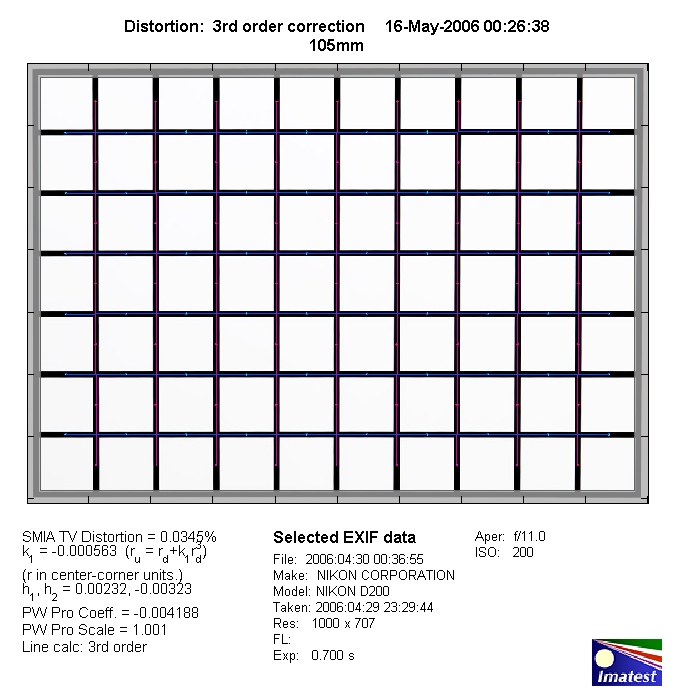|
Micro-Nikkor AF 105mm f/2.8 D - Review / Lab Test Report - Analysis |
|
Lens Reviews -
Nikon / Nikkor (APS-C)
|
|
Page 2 of 2
Distortion
The Micro-Nikkor shows extremely low distortion (0.03%) which is absolutely negligible
in field conditions.

The chart above has a real-world size of about 120x80cm.
Vignetting
Thanks to the sweet spot behavior on the D200 vignetting is very well controlled and
it is no problem to use this lens even at the max. aperture setting (f/2.8).

MTF (resolution)
Typical for most macro lenses the performance of the Micro-Nikkor is excellent
straight from the max. aperture setting and there's only a marginal difference
in resolution between the center and the borders. Beyond medium aperture settings
diffraction is the limiting factor so better avoid very small apertures. This
is a physical limitation and not a design issue.
Please note that the MTF results are not directly comparable across the different systems!
Below is a simplified summary of the formal findings. The chart shows line widths per picture height (LW/PH) which can be taken as a measure for sharpness.
If you want to know more about the MTF50 figures you may check out the corresponding Imatest Explanations
Chromatic Aberrations (CAs)
Chromatic aberrations (color shadows at harsh contrast transitions) are very
low at around 0.5px on the average at the image borders.

Sample Shots
Some sample images will be added during the next weeks.
Verdict
The Micro-Nikkor AF 105mm f/2.8 D may be a relatively old lens but it is
still capable to deliver excellent results. Optically it is a near-flawless
lens with high resolution figures, low vignetting, low CAs and non-existent
distortions. The mechanical quality is very high but it also feels a little
dated here with its independent AF-MF switch. Typical for most macro lenses
it also suffers from a relatively slow AF speed. The new Micro-Nikkor
AF-S 105mm f/2.8 ED VR has been improved in both respects (with VR on top)
and regarding its similar price tag there're probably few reasons left to
prefer the classic lens. Nonetheless it is still a very fine lens.
|